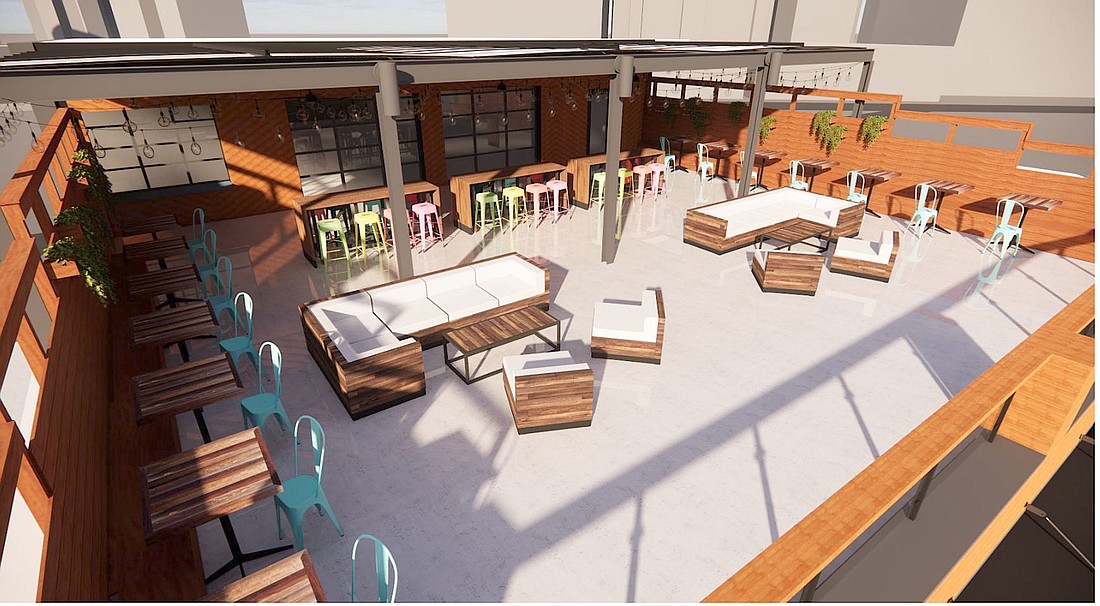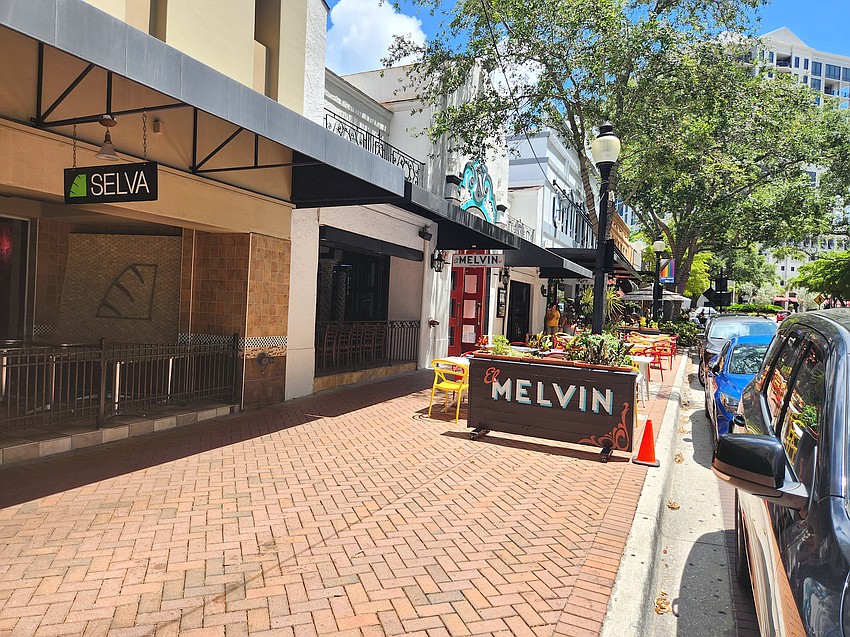- April 4, 2025
-
-
Loading

Loading

Sometimes simplification can be complicated.
What began as an exercise to simplify the definitions of drinking and dining establishments in downtown turned into nearly a year of public engagement sessions and hours of discussion during a previously tabled public hearing and subsequent workshop.
Still, the Sarasota City Commission could not reach a consensus about some nuances of a zoning text amendment proposed to provide clearer definitions of restaurants, bars and nightclubs in the downtown zone districts.
In a split decision, commissioners by 3-2 and 4-1 votes approved two zoning text amendment ordinances on first reading, with modifications, that define those businesses independent from the definitions used by state liquor licensing.
The intent is to simplify the definitions in order to prevent some restaurants from operating as nightclubs and nightclubs from operating as restaurants. It also aims to keep smaller establishments from being defined as bars, which require a higher level of scrutiny for approval and operations. Some residents, though, have called the changes an open door for bar and nightclub proliferation.
Much of the debate among commissioners focused on two areas. Vice Mayor Jen Ahearn-Koch held steadfast to her position that any food service establishment that lacks an on-site kitchen shouldn't be classified as a restaurant. She was joined by Commissioner Debbie Trice in her long-held concerns over the definition and operation of outdoor bars.
The zoning text amendment proposes the distinction between an indoor and outdoor bar as whether the bar service area itself is or can be enclosed regardless of whether the seating area is indoors or outdoors. Ahearn-Koch insisted an outdoor bar should be defined by where the activity takes place.
“For me it’s confusing to say the activities are happening outside but the location of the counter is inside, so it's considered an indoor bar," she said. "I'm just curious why it's not the activity that is determining whether it's an indoor bar or an outdoor bar. I just don't see the logic of where the counter is determining whether it's indoor or outdoor. In my mind, it should be where the activity is because it's the activity that is the intensity."
Whether indoor or outdoor, any patio area — rooftop or street level — must be vacated by 11 p.m. weeknights and midnight Fridays and Saturdays, according to the proposed ZTA.
The flashpoint of the ZTA effort is the operation of El Melvin at 1355 Main St. Its practice of opening its sliding glass walls after 10 p.m. and moving tables and chairs to create a dance floor brought a flood of complaints from nearby condo residents about loud music playing until 2 a.m. Staff was tasked with crafting a ZTA to address that and similar situations, along the way simplifying the definitions of restaurants, bars and others.

Many residents complained staff took the ordinance beyond the scope of the assignment and that the results will facilitate a proliferation of bars in downtown.
“I don't think we're going to see a proliferation of bars, because it is market-driven No. 1, and No. 2 you have to have the property available to be able to do that,” said Mayor Liz Alpert.
Commissioner Erik Arroyo motioned to approve the ordinance to establish new definitions with changes to permit off-site meal preparation for restaurants and to prohibit outdoor nightclub operations.
That motion was approved 3-2 with Trice and Ahearn-Koch opposed. He also motioned to approve the ZTA ordinance to modify the standards regarding outdoor seating and the sale of alcoholic drinks, and to remove expanding the exemption area to the eastern part of downtown and the Rosemary District. That was approved 4-1 with Ahearn-Koch opposed.
Final approval of the ZTA will require a second reading and a majority of affirmative votes.
The ZTA includes modified definitions for the terms restaurant, bar, outdoor bar and nightclub. It also creates a bottle club definition.
The definition of a restaurant doesn't clarify that meals may be prepared on- or off-site and still function as a restaurant. “Pop-up” kitchens, or restaurants that do not have full kitchens or prepare meals off-site, are an increasingly popular use and fall under the definition.
Some restaurants transition at night, creating a more intense use that is comparable to a nightclub rather than a restaurant. The ZTA aims to close that loophole.
The prior definition of a bar does not provide a distinction between a bar and an outdoor bar. It permits outdoor bars only as an accessory use to a hotel, motel or private club and is not considered as a primary use. The ZTA proposes a distinction between a bar and an outdoor bar to permit by right an outdoor bar as a primary or accessory use.
The nightclub definition is tied to state licensing, which is unreliable in determining how such an establishment will operate. This has resulted in restaurants smaller than 2,000 square feet being classified as nightclubs because they cannot meet the state liquor license capacity. Smaller restaurants classified as nightclubs must undergo a lengthier, more intensive and more costly review process. The ZTA proposes to address specific components of a nightclub use not tied to state licensing such as live, amplified entertainment and late-night operations.
Based on the new and modified definitions for the terms bar, outdoor bar and nightclub, staff recommends an update to the primary use charts for the commercial, production intensive, special purpose and downtown zone districts.
Defining uses by intensity as opposed to state licensing creates a distinction between the intensities for restaurants/bars, outdoor bars and nightclubs.
The modified definition for the term “bar” creates an intensity similar to restaurants by providing comparable services, hours of operation and a bar component. The ZTA proposes to permit bars by-right in certain commercial zone districts and by right in all industrial zone districts.
Bars that provide live, amplified music after 11 p.m. Sunday through Thursday, after 11:59 p.m. Friday and Saturday, or the day prior to a holiday would be classified as a nightclub and would be required to obtain a major conditional use permit.
Newly defined outdoor bars are proposed to be permitted via minor conditional use permit in some commercial zone districts and in all industrial zone districts. For both bars and outdoor bars, a 500-foot separation requirement from the nearest school or church/synagogue/sanctuary, property residentially zoned, or another bar, outdoor bar, nightclub, or alcoholic beverage store applies outside of the Downtown Exemption Area.
The standards for outdoor seating and other outdoor areas of restaurants, as established in these regulations, have citywide applicability and are designed to facilitate outdoor seating and other outdoor areas of restaurants in commercial areas.
Outdoor seating and other outdoor areas of restaurants shall provide the same amenities and facilities as interior restaurants including, but not limited to, shade structures and restrooms that are accessible to customers.
Also: